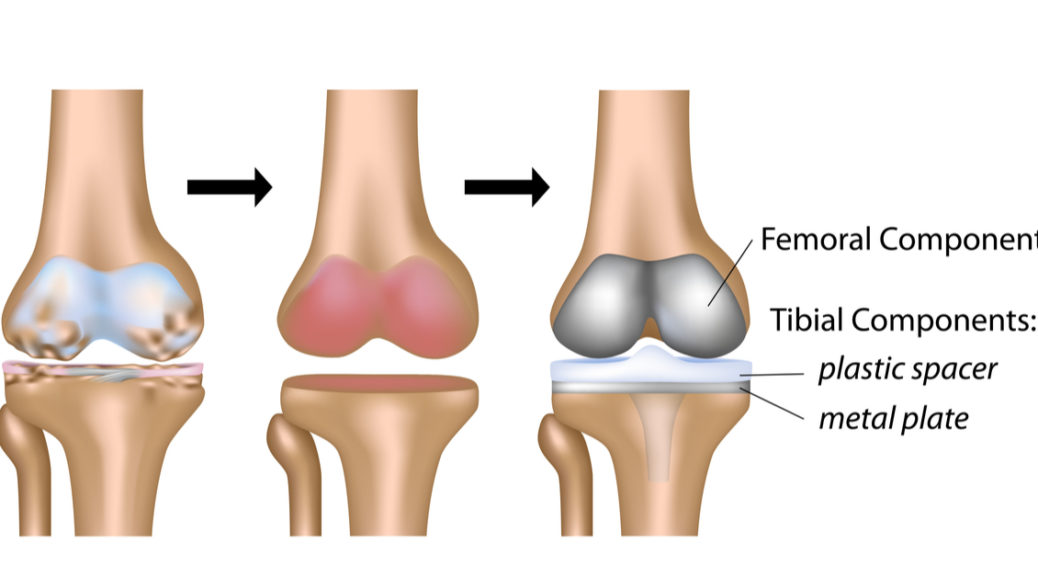
Knee Replacement
The knee represents one of the most used and highly complicated joints in the body. Four bones come together to form your knee. The thigh bone, called the femur, joins to the front bone below the knee, named the tibia. The bone below the knee, labeled the fibula, rests beside or slightly behind the tibia; whereas, the kneecap, named the patella, rests on top of your joint.
Cartilage, a thick, flexible tissue at the end of your bones, acts as a shock-absorbing cushion between your bones. Around the knee, a piece of cartilage goes by the name of meniscus. The two cartilages, the medial and lateral menisci, protect the site between the femur and tibia.
Two key structures fasten the knee muscles and bones together. Tendons perform, similar to tight rubber bands, to attach the knee bones to the leg muscles and allow movement of the joint. Ligaments connect the knee bones and act as rigid ropes to keep the joint stable.
Knee injuries
The most common knee injuries involve twisting, bending, stretching or falling on the knee. When the ligaments get stretched or torn, it is called a sprain; whereas, injuries to the muscles and tendons refer to strains. If you run or play sports regularly, you should know that knee injuries represent 50 percent of the visits to the doctor even though knee injuries denote only 15 percent of sports injuries.
Swelling to the bursa may occur from direct blows to the knee or chronic use of the joint. The term, bursitis, describes this painful condition. Bursitis can be a chronic condition especially in the elderly who lose the liquid in these fluid-filled sacs.
Ligament tears signify more serious injury to the knee. You hear about football players being unable to play due to anterior cruciate ligament or medial collateral ligament injuries, the two most commonly injured ligaments of the knee.
Fractures (broken bones) to the patella bone or the other bones around the knee (femur, tibia or fibula) occur most commonly due to falling on the knee, the knee hitting a hard object or severe turning motion.
Our Services
- Anesthesiology
- Critical Care Medicine
- Emergency Medicine
- Endocrinology
- ENT
- General Surgery
- Infectious Diseases
A Little on Treatment
Unfortunately, inability to use your knee(s) greatly impacts your life, but state of the art treatment can return function to the knee. First aid measures and rest denote the first line of treatment for a knee injury or condition. If initial treatment fails, your provider may advise bracing, physical therapy, medication, and, occasionally, surgery. Management of the knee condition varies contingent upon the location, nature, and seriousness of the injury as well as your age, health state, and degree of activity (such as sedentary lifestyle, working, participating in sports).

